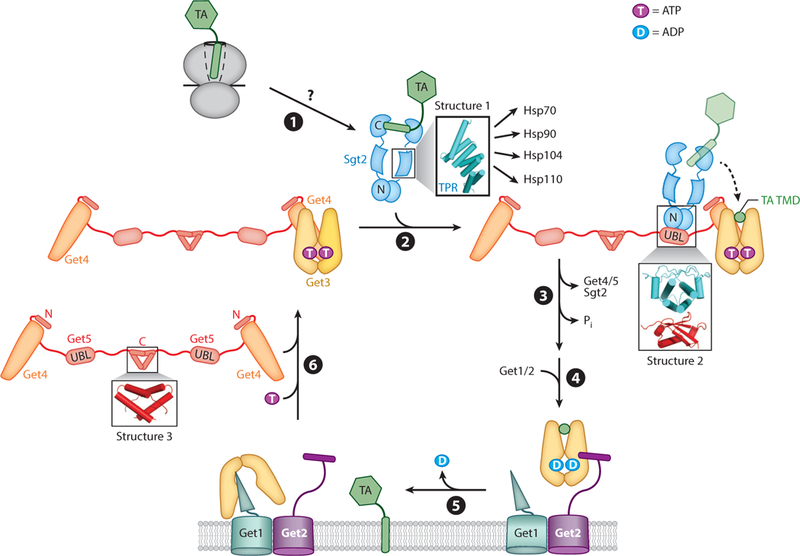Figure 2.

Major steps in the yeast GET pathway. (➊) A nascent tail-anchored protein (TA) is captured by Sgt2 after translation by the ribosome. Structure 1 (PDB 3SZ7) shows the Sgt2 tetratricopeptide repeat (TPR) domain, which binds various chaperones. (➋) Sgt2 transfers the TA to Get3, a process stimulated by the Get4/5 complex. Structure 2 (PDB 2LXC) shows the N-terminal domain of Sgt2 bound to the ubiquitin-like (UBL) domain of Get5. (➌) The Get3•TA complex dissociates from Get4/5, and ATP hydrolysis is activated. (➍) The Get2 subunit in the Get1/2 receptor captures the Get3•TA complex. (➎) Following ADP release, Getl interacts with and disassembles the Get3•TA complex, and the TAis inserted into the membrane through an unknown mechanism. (➏) ATP and Get4/5 together drive the release of Get3 from Getl, recycling Get3 for additional rounds of targeting. Structure 3 (PDB 2LNZ) shows the Get5 homodimerization domain. TMD denotes transmembrane domain. Individual proteins are denoted by the following colors: Getl, cyan; Get2, violet; Get3, yellow; Get4, orange; Get5, red; Sgt2, blue; TA, green.
